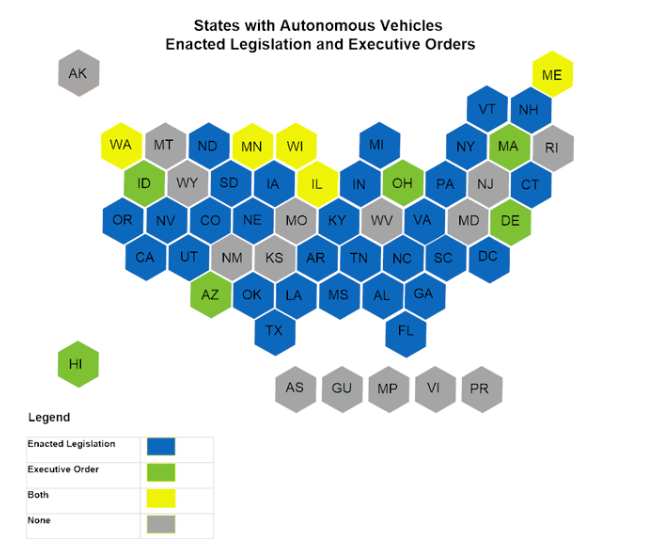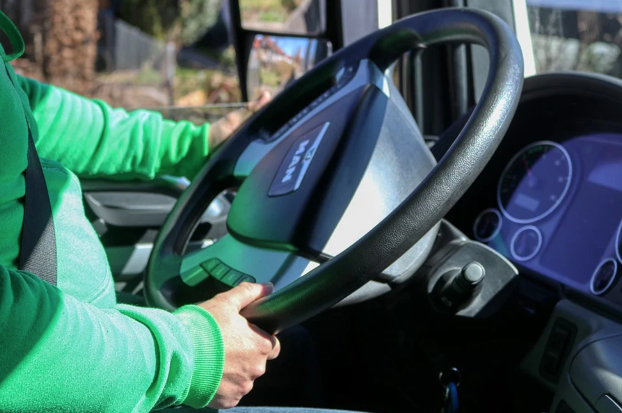Guest Author: Allie C. Bennett
Some of the most essential jobs in our economy are in the trucking industry. The White House’s fact sheet on the trucking workforce notes that 72% of American goods are shipped by truck and that it has been the backbone of goods delivery all over the country. However, despite the high demand, there is a lack of truck drivers in the US as many of the current drivers are headed toward retirement. The government and private companies are currently investing in initiatives to encourage people to work as truck drivers, as well as find ways to improve the trucking industry as a whole.

With significant advancements in fleet technology, another solution companies have looked into is using automated systems. Our post on “3 Valuable Forms of Fleet Automation” describes how different aspects of trucking can be automated, such as the use of fleet management software, automated driver recruiting and hiring, and autonomous driving. They present opportunities for greater shipments and could improve our overall economy — but is automation the be-all and end-all for trucking?
Artificial intelligence (AI), alongside automation, will revolutionize commercial trucking
Currently, several AI tools can help plan out the best routes available to drivers but combining these with automation can further optimize businesses. A feature on the future of IT jobs by Maryville University highlights that automation focuses on labor-intensive tasks which frees up the human workforce to work on more complex tasks. Related innovations like artificial intelligence and machine learning are expected to continue automation’s growth, especially as automation becomes more entrenched in businesses and operations, such as trucking and distribution.
ZDNet’s discussion on AI’s industrial impact predicts that it will continue to improve travel and time management. In the future, driverless trucks could be implemented for long-haul deliveries to save money and improve road safety which could ease the demand for truck drivers. There could also be systems that automatically manage inventory through digital means and make the unloading process much smoother.

Automation is met with concerns about a changing labor market
In recent years, companies have found it difficult to recruit truck drivers so automation is being looked at as a way to fill the gap. However, many unions are concerned that this would lead to lots of drivers losing their jobs. While one study suggests that possibly up to 500,000 jobs could be affected by the shift to autonomous driving, the same study also noted that this change would create newer and less strenuous jobs, especially at truck stops. Operators would be needed to switch trailers, provide maintenance, and offer customer service, to name but a few. There are still lots of technological limitations that come with AI and automation, and our current fleet technology won’t be able to do work beyond what’s required for safe driving until further adoption occurs and more live data is being processed. It’s likely that human input would instead shift to more valuable roles as the industry progresses with the adoption of the new fleet technology.
Despite the advances in technology, full automation still requires some improvements before full adoption is feasible
Currently, automated vehicles are allowed on the roads in twenty-nine states including, Alabama, Arkansas, California, Colorado, Connecticut, Florida, Georgia, Illinois, Indiana, Kentucky, Louisiana, Maine, Michigan, Mississippi, Nebraska, New York, Nevada, North Carolina, North Dakota, Oregon, Pennsylvania, South Carolina, Tennessee, Texas, Utah, Virginia, Vermont, Washington, and Wisconsin. A primary concern of regulators is the challenge of getting the vehicles to perform in adverse road conditions like snow and fog.
In addition to these challenges, laws and regulations around self-driving vehicles that are managed by the National Highway Traffic Safety Administration are inconsistent across states. Full automation would mean a Level 5 system; however, current trends in the industry only depend on partial automation at Level 2 or 3 to be recognized as having autonomous qualities. There are also many unions calling for additional policies to ensure that companies are held accountable for their truckers and present them with other job options when the shift to automated driving happens. With so many considerations, it’s more appropriate to invest time in hybrid options to enhance the driving experience and improve current business models.
by: Allie C. Bennett


